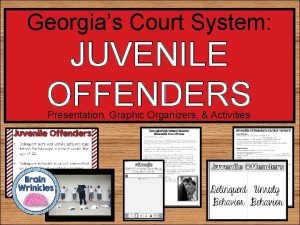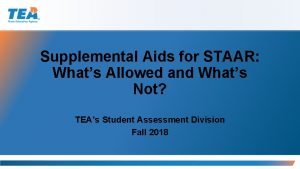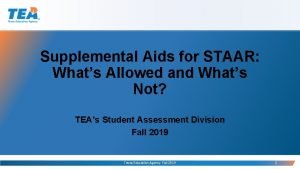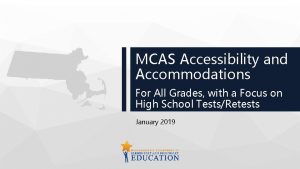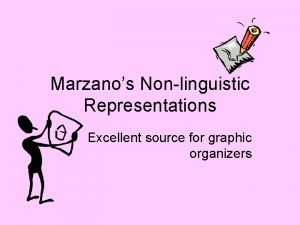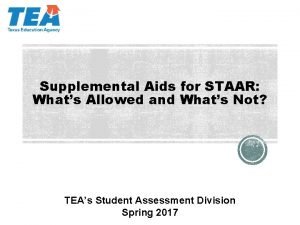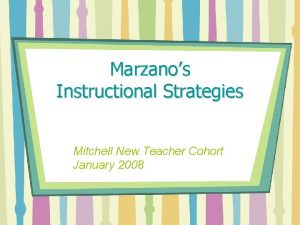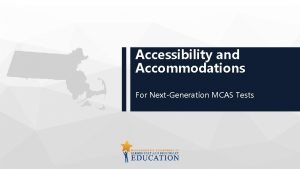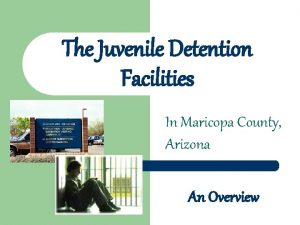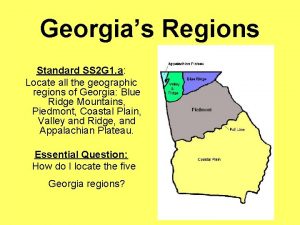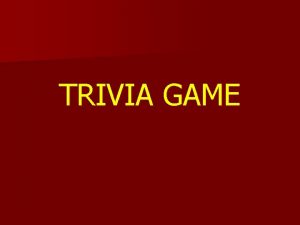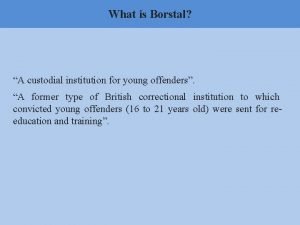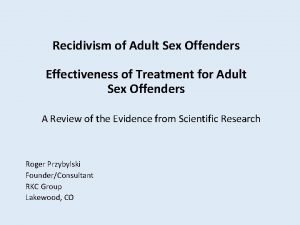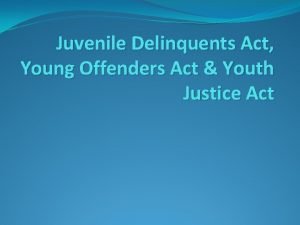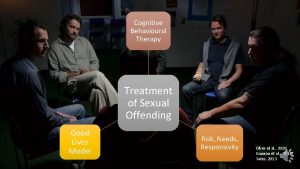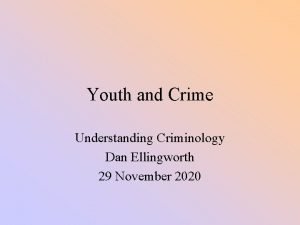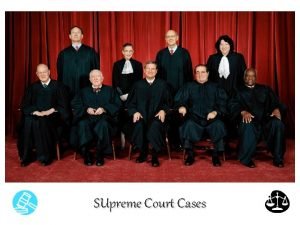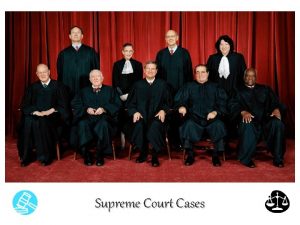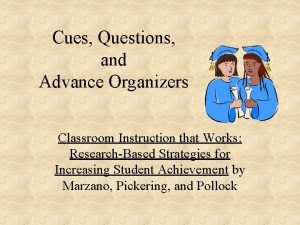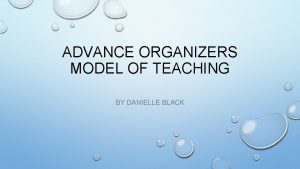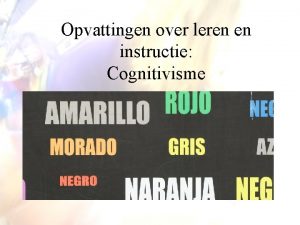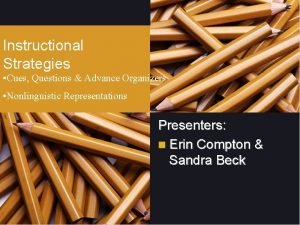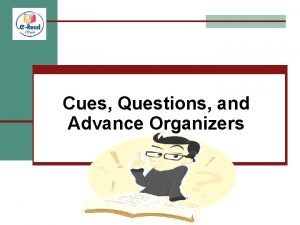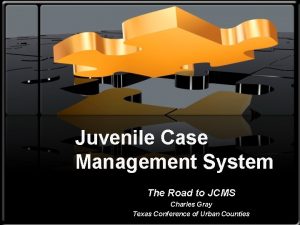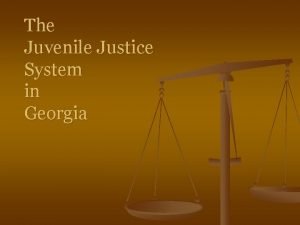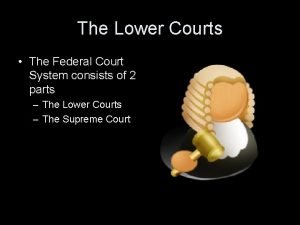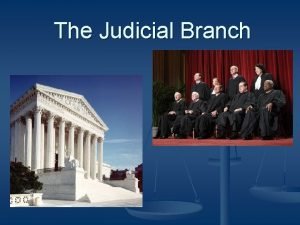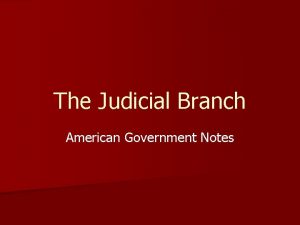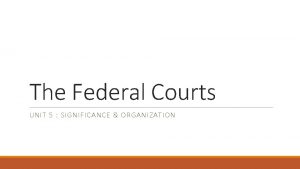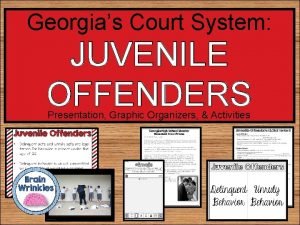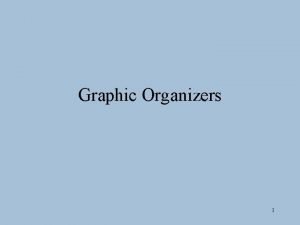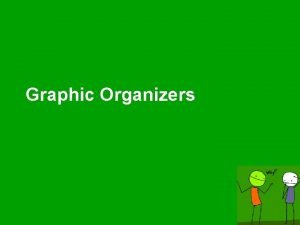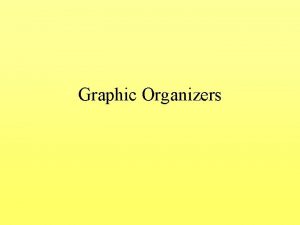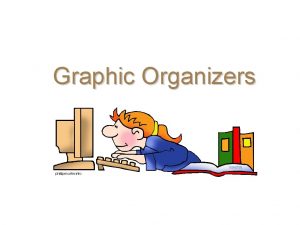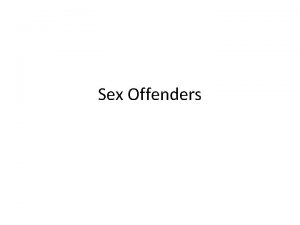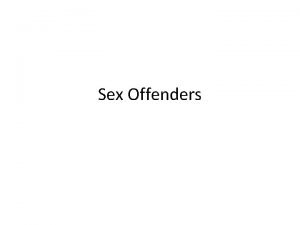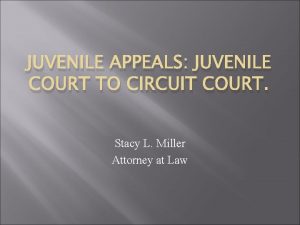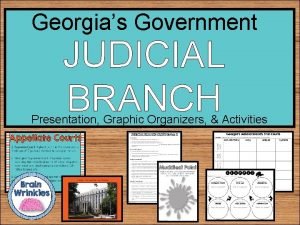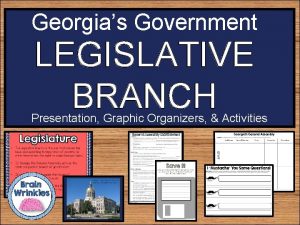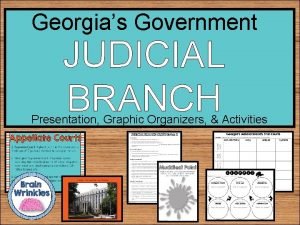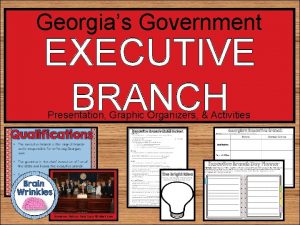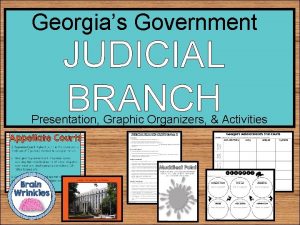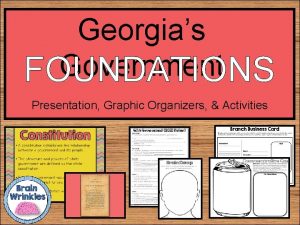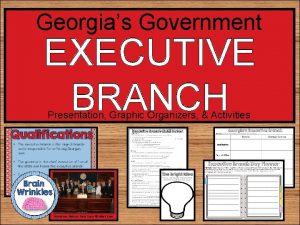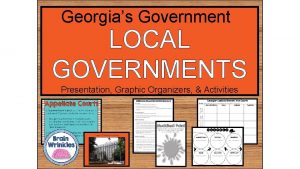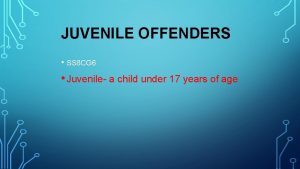Georgias Court System JUVENILE OFFENDERS Presentation Graphic Organizers












































- Slides: 44

Georgia’s Court System: JUVENILE OFFENDERS Presentation, Graphic Organizers, & Activities

STANDARDS: SS 8 CG 6 The student will explain how the Georgia court system treats juvenile offenders. a. Explain the difference between delinquent behavior and unruly behavior and the consequences of each b. Describe the rights of juveniles when taken into custody. c. Describe the juvenile justice system, emphasizing the different jurisdictions, terminology, and steps in the juvenile justice process. d. Explain the seven delinquent behaviors that can subject juvenile offenders to the adult criminal process, how the decision to transfer to adult court is made, and the possible consequences. © Brain Wrinkles

Georgia’s Court System: JUVENILE OFFENDERS © Brain Wrinkles

Juvenile Offenders • Delinquent acts and unruly acts are legal terms for behavior in minors under the age of 16. • Delinquent behavior is an act committed by a juvenile that would be a criminal offense according to state law. • Unruly behavior is an act committed by a juvenile that would not be a criminal © Brain Wrinkles

© Brain Wrinkles

Delinquent Behavior • Delinquent behavior would be considered a crime if it were committed by an adult. • • Treatment, rehabilitation, or court supervision is necessary. Examples include possession of drugs, theft, assault, rape, and murder. © Brain Wrinkles

Delinquent Behavior • If the act is serious enough, the juvenile may be charged as an adult and subject to all adult penalties. • Repeat offenders are called designated felons and are considered a danger to the community and can be imprisoned for up to five years. © Brain Wrinkles

Unruly Behavior • Unruly behavior is when a juvenile violates a law that only pertains to children. • • Treatment, rehabilitation, or supervision by the court is necessary. Examples include skipping school, driving without a license, possession of alcohol or cigarettes, loitering in public places between 12 © Brain Wrinkles

Unruly Behavior • If a minor commits these acts, he or she may be placed in a juvenile detention center. © Brain Wrinkles

© Brain Wrinkles

© Brain Wrinkles

Juveniles’ Rights • Juveniles have the same rights as adults do when taken into custody, as well as several more specifically for juveniles: • • The right to have parent/guardian contacted immediately. The right to have parent/guardian and an attorney present before they can be questioned by authorities. © Brain Wrinkles

Juveniles’ Rights • Juveniles have the same rights as adults do when taken into custody, as well as several more specifically for juveniles: • • The right to be represented by an attorney at a trial. The right to not be placed with adult offenders. • The right not to have names or © Brain Wrinkles

Juvenile Courts • Courts in the juvenile justice system are focused on rehabilitating juveniles rather than punishing them like adults. • The system has a lot of flexibility because its main goal is to correct juvenile offenders and not necessarily to punish them. © Brain Wrinkles

Juvenile Courts • Juvenile courts have jurisdiction over cases involving children 17 and under, or those under 18 who don’t have a parent/guardian. • In Georgia, juvenile courts may stand alone or be part of the superior court system. © Brain Wrinkles

© Brain Wrinkles

Steps • There are several basic procedures for juveniles entering the criminal justice system. 1. Taken into Custody - similar to arrest for adults 2. Intake Officer – decides if there is enough evidence to make a charge against the juvenile 3. Released to parent/guardian or Detained

© Brain Wrinkles

Steps 4. Informal Adjustment – optional if juvenile is first time offender. Juvenile must admit guilt to the judge and is under court supervision for 90 days. 5. Adjudicatory Hearing – judge determines guilt or innocence. There are no juries in juvenile cases. 6. Disposition Hearing – judge hears © Brain Wrinkles

Steps 7. Sentencing – judge rules on punishment. Options include fines, probation, boot camp, youth detention center, and/or mandatory counseling and school attendance. 8. Appeal – juvenile can appeal ruling if there is enough evidence to prove they were innocent. © Brain Wrinkles

© Brain Wrinkles

© Brain Wrinkles

7 Delinquent Behaviors • If a juvenile between the ages of 13 -17 commits one of the seven delinquent behaviors listed below, he/she can be tried as an adult and will face the same punishment. 1. 2. 3. 4. 5. 6. © Brain Wrinkles Murder Voluntary manslaughter Rape Aggravated sodomy Aggravated child molestation Aggravated sexual battery

Adult Court • The teen accused of one of the seven delinquent behaviors is no longer protected by the juvenile justice system and the case is sent to the Superior Court. 1. A complaint is first made about the delinquent act and the juvenile may be sent to a detention center. 2. After the case is investigated, it is © Brain Wrinkles

Adult Court 3. If a petition is filed, an arraignment hearing is scheduled. 4. The alleged offender may remain silent, deny the petition, or agree to the petition. 5. A court date is set and a trial is conducted. © Brain Wrinkles

Consequences • The possible consequences are the same as an adult. • A jury may find the defendant guilty and a sentence is passed down • A guilty verdict may be appealed to the Supreme Court. • If convicted, the juvenile must spend all jail time (minimum of 10 years) in an adult prison without parole.

© Brain Wrinkles

TEACHER INFO: Juvenile Offenders Foldable • • • © Brain Wrinkles Print off the foldable for each student. The students will cut the template out along the thick, outside lines. Next, they will cut along the thin lines that divide each word, stopping at the gray rectangle. They should attach the side of the template (gray rectangle) to their notebooks. They will now be able to open up each flap and write information & examples about Delinquent Behavior and Unruly Behavior underneath.

© Brain Wrinkles Juvenile Offenders Delinqu Unruly ent Behavi or

© Brain Wrinkles Juvenile Offenders • Delinquent behavior would be considered a crime if it were committed by an adult. • Examples include possession of • drugs, theft, assault, rape, and murder. • If the act is serious enough, the juvenile may be charged as an adult and subject to all adult penalties. • • Unruly behavior is when a juvenile violates a law that only pertains to children. Examples include skipping school, driving without a license, possession of alcohol or cigarettes, loitering in public places between 12 am and 5 am, and leaving home without parents’ permission. If a minor commits these acts, he or she may be placed in a juvenile detention center.

TEACHER INFO: Article & Response Questions • Print off the Article & Response Questions for each student. (Print front-to-back). • Have the students answer the BEFORE READING questions. This is a good time for students to discuss their answers with partners/as a class. • After students read the article, they will answer the AFTER READING questions. Allow students to discuss their answer with a partner, and then hold a class discussion about the topic. © Brain Wrinkles

Article Response Questions Part One: BEFORE READING Answer questions 1 -3 BEFORE reading the article. 1. How do you feel about consequences for juveniles who commit delinquent acts? 2. Do you think it’s fair that these juveniles are tried as adults? Explain. 3. Should their punishment be less severe because of their age (despite the crime committed)? Explain. _____________________________________ Part Two: AFTER READING Answer questions 4 -9 AFTER reading the article. 4. What did Anthony Solomon do in 1999? 5. How old was he at the time? 6. What was Solomon’s sentence? 7. How long did he serve? 8. Why was Solomon released early? 9. Based on what you’ve learned about Georgia’s juvenile justice system, do you think his punishment was fair? Explain. © Brain Wrinkles

Georgia High School Shooter Released from Prison July 28, 2016 by Jessica Szilagyi After serving 17 years in prison, the teen who shot and injured six classmates inside Heritage High School just a month after the deadly Columbine High School shooting has been released from prison. T. J. Solomon was 15 years old when he shot six Rockdale County High School students in May of 1999 when he entered the school’s commons area with his stepfather’s. 22 caliber rifle and a. 357 Magnum revolver. Solomon was released from prison Tuesday after serving seventeen of his twenty-year sentence. He had been incarcerated at Phillips State Prison in Buford, Georgia. The Atlanta Journal Constitution reports that Solomon was granted early parole by the Georgia State Board of Pardons and Paroles. They ruled that Solomon “demonstrated a clear record of rehabilitation including successfully performing in a Department of Corrections work release program. ” The Rockdale County District Attorney opposed his release. He was originally sentenced to 40 years in prison after his lawyers claimed he was mentally ill. Following the trial and sentencing appeals, the sentence was reduced to 20 years. Solomon was sentenced in 2000. Solomon will now be on voice recognition monitoring, he cannot contact any of the victims, and he is barred from the campus of any public School in Georgia. Article from All On Georgia

TEACHER INFO: Design A Detention Center • Print off the Detention Center rough draft for each student. Print off the Brochure pages for each student (front-to-back). • The students will design a plan for a new youth detention center in their community. • Have the students answer the questions on the rough draft page first. Have them share their answers with a partner to address any issues before creating the brochure. • The students will create a brochure for their detention center. They should include information from their rough drafts as well as draw pictures for each section. © Brain Wrinkles

Design A Detention Center – Rough Draft Directions: Imagine that you are in charge of designing a new youth detention center in your community. Complete the following plan to inform the community about your design. 1. What is the goal of your youth detention center? 2. Who will be sent to your facility? (Consider age, gender, type of crimes committed, etc. ) 3. What kind of security will the center have? 4. What is the staff like at the center? What skills will they have? What roles will they take on? How many will you need? 5. What rules will be in place at the facility? 6. What will the juvenile offenders do with their time at the facility? (Consider your facility’s goal when answering. ) 7. Describe some programs available for juvenile offenders at the center. 8. What concerns do you think the people might have with your center opening in their community? How will you address those concerns? © Brain Wrinkles

Goal: © Brain Wrinkles Students: Staff: Security: Rules:

How the students will spend their time: © Brain Wrinkles Programs Available: Community Concerns Addressed:

TEACHER INFO: Comprehension Check • Print off the Comprehension Check for each student. • After the lesson, have the students answer the questions. *This could also be used as a quiz. © Brain Wrinkles

Juvenile Offenders Comprehension Check 1. What is the main difference between delinquent and unruly behavior? 2. Examples of delinquent behavior: 3. Examples of unruly behavior: 4. In the juvenile justice system, where is the emphasis? 5. Do you think juveniles should be tried differently than adults by the court system? Explain. 6. When can a juvenile be tried as an adult? 7. List the 7 delinquent behaviors: 8. What court has jurisdiction when a juvenile is tried as an adult? 9. List the steps to transfer to adult court: 10. What happens to a juvenile when a guilty verdict is handed down? © Brain Wrinkles

Juvenile Offenders Comprehension Check 1. What is the main difference between delinquent and unruly behavior? Delinquent act would be considered a crime if committed by an adult 2. Examples of delinquent behavior: possession of drugs, theft, assault, rape, and murder 3. Examples of unruly behavior: skipping school, driving without a license, possession of alcohol or cigarettes, loitering in public places between 12 am and 5 am, and leaving home without parents’ permission 4. In the juvenile justice system, where is the emphasis? Rehabilitation 5. Do you think juveniles should be tried differently than adults by the court system? Explain. Answers will vary. 6. When can a juvenile be tried as an adult? When he or she commits one of the 7 delinquent behaviors 7. List the 7 delinquent behaviors: Murder, voluntary manslaughter, rape, aggravated sodomy, aggravated child molestation, aggravated sexual battery, & armed robbery with a firearm 8. What court has jurisdiction when a juvenile is tried as an adult? Superior Court 9. List the steps to transfer to adult court: Complaint filed, petition filed, arraignment hearing scheduled, court date is set & trial is conducted 10. What happens to a juvenile when a guilty verdict is handed down? Youth must spend all jail time (minimum of 10 years) in adult prison without parole © Brain Wrinkles

TEACHER INFO: TICKET OUT THE DOOR • Print off the #Emojis handout for each student (two-per-page). • Have students create 3 emoticon symbols to represent today’s lesson. • On the back of the slip, students will write a brief description of each emoji and how it is significant to the lesson. © Brain Wrinkles

Name: #Emojis Create 3 emoticons to depict key concepts from today’s lesson. On the back of this slip, describe the importance of each emoji. © Brain Wrinkles

Thank You! Thank you so much for downloading this file. I sincerely hope you find it helpful and that your students learn a lot from it! I look forward to reading your feedback in my store. If you like this file, you might want to check out some of my other products that teach social studies topics in creative, engaging, and hands-on ways. Best wishes, Ansley at Brain Wrinkles

Terms of Use © Brain Wrinkles. Your download includes a limited use license from Brain Wrinkles. The purchaser may use the resource for personal classroom use only. The license is not transferable to another person. Other teachers should purchase their own license through my store. This resource is not to be used: • By an entire grade level, school, or district without purchasing the proper number of licenses. For school/district licenses at a discount, please contact me. • As part of a product listed for sale or free by another individual. • On shared databases. • Online in any way other than on password-protected website for student use only. © Copyright Brain Wrinkles. All rights reserved. Permission is granted to copy pages specifically designed for student or teacher use by the original purchaser or licensee. The reproduction of any other part of this product is strictly prohibited. Copying any part of this product and placing it on the Internet in any form (even a personal/classroom website) is strictly forbidden. Doing so makes it possible for an Internet search to make the document available on the Internet, free of charge, and is a violation of the Digital Millennium Copyright Act (DMCA). Thank you, Ansley at Brain Wrinkles Clipart, fonts, & digital papers for this product were purchased from:
 Juvenile delinquency graphic organizer
Juvenile delinquency graphic organizer Tea blank graphic organizers
Tea blank graphic organizers Blank graphic organizers for math staar
Blank graphic organizers for math staar Tea blank graphic organizers
Tea blank graphic organizers Hierarchical topical organizer
Hierarchical topical organizer Universal accommodations for mcas
Universal accommodations for mcas Non linguistic examples
Non linguistic examples Blank graphic organizers for math staar
Blank graphic organizers for math staar Marzano graphic organizers
Marzano graphic organizers Mcas graphic organizer
Mcas graphic organizer Durango juvenile court
Durango juvenile court Georgias regions
Georgias regions Georgias geography
Georgias geography Georgias colony
Georgias colony Okefenokee swamp
Okefenokee swamp Georgias region
Georgias region Is there a basketball court above the supreme court
Is there a basketball court above the supreme court A custodial institution for young offenders.
A custodial institution for young offenders. Cognitive behavioral therapy for sex offenders
Cognitive behavioral therapy for sex offenders Young offenders act
Young offenders act Cognitive behavioral therapy for sex offenders
Cognitive behavioral therapy for sex offenders According to choice theorists offenders
According to choice theorists offenders Youthful offenders act 1854
Youthful offenders act 1854 Supreme court cases graphic organizer answers
Supreme court cases graphic organizer answers Cohens vs virginia apush
Cohens vs virginia apush Non-sequitur transition
Non-sequitur transition Ghost graphic story graphic and wayfinding
Ghost graphic story graphic and wayfinding Cues, questions, and advance organizers
Cues, questions, and advance organizers Advance graphic organizer
Advance graphic organizer Expository advance organizers examples
Expository advance organizers examples Dear organizers
Dear organizers Discourse analysis and vocabulary
Discourse analysis and vocabulary Cues questions and advance organizers
Cues questions and advance organizers Cues questions and advance organizers
Cues questions and advance organizers Cues questions and advance organizers
Cues questions and advance organizers Juvenile case management system
Juvenile case management system Juvenile justice system georgia
Juvenile justice system georgia Ra 9344 cases
Ra 9344 cases Juvenile justice system in georgia
Juvenile justice system in georgia Minnesota juvenile justice system
Minnesota juvenile justice system Federal court system structure
Federal court system structure Us court system chart
Us court system chart The dual court system in the u.s. means
The dual court system in the u.s. means The us federal
The us federal France court system
France court system
